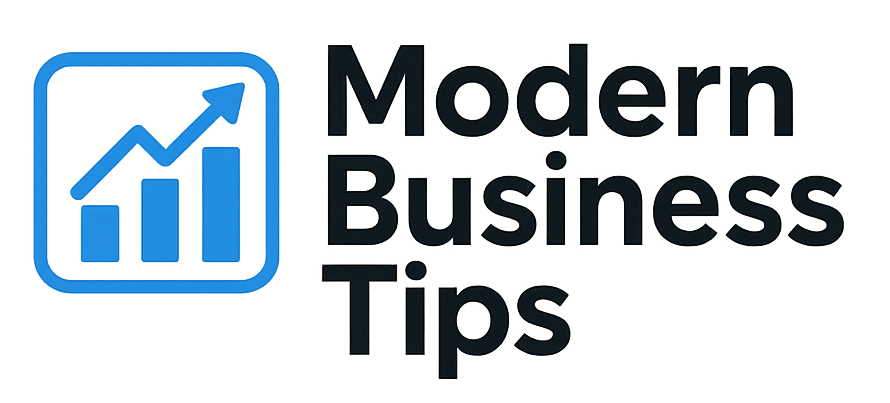Ecommerce, or electronic commerce, is about buying and selling online. It lets people and businesses make deals over the internet. This can be done on computers, smartphones, or tablets.
This concept goes beyond just making purchases. It’s a new way to shop and do business.
By 2026, ecommerce sales are expected to hit over $7 trillion. Knowing what ecommerce is is key for success in today’s digital world.
Key Takeaways
- Ecommerce refers to the electronic buying and selling of goods.
- It utilizes various digital devices like smartphones and tablets for transactions.
- The ecommerce market is projected to surpass $7 trillion by 2026.
- Understanding ecommerce is essential for success in today’s economy.
- Ecommerce is a modern approach to shopping and business operations.
Understanding Ecommerce: A Brief Overview
In today’s world, knowing about ecommerce is key for both shoppers and sellers. I’ll explain what ecommerce is, its different types, and why it’s beneficial. This info is a starting point for anyone wanting to get into online shopping.
Definition of Ecommerce
Ecommerce means buying and selling things online. It lets businesses and customers make deals over the internet. This makes shopping easy and convenient from home.
Types of Ecommerce Models
It’s important to know about ecommerce models to understand online business. The main types are:
- Business-to-Consumer (B2C): Direct sales from businesses to individual consumers.
- Business-to-Business (B2B): Transactions between companies, often involving wholesale distribution.
- Consumer-to-Consumer (C2C): Sales between individual consumers, usually facilitated by online platforms.
- Consumer-to-Business (C2B): Individuals selling products or services to businesses.
Benefits of Ecommerce
Ecommerce offers many benefits for both customers and businesses. Some of the main advantages are:
- Convenience: Consumers can shop anytime, without the limits of physical stores.
- Greater Selection: There’s a wide range of products available, more than what’s found in stores.
- Lower Startup Costs: Starting an online business often costs less than opening a physical store.
- Global Reach: Businesses can reach customers worldwide, growing their market.
The Rise of Ecommerce in the Digital Age
Ecommerce has changed a lot in recent years. Looking at ecommerce growth statistics, it’s clear how big this area has become in retail. The data shows how technology and changing consumer trends are driving this growth.
Growth Statistics
In 2023, ecommerce has seen amazing growth. Sales for US sellers in the Amazon store went up by 22% from the year before. Over 4.5 billion items were sold. These numbers show how much people rely on online shopping, making it key for businesses to keep up.
Impact of Technology on Ecommerce
Technology has greatly changed ecommerce. New things like artificial intelligence and mobile apps have changed how we shop. Secure payments and personalized shopping experiences make customers happier. These are key for staying ahead in the digital world.
Consumer Trends Driving Ecommerce
Now, many trends are shaping ecommerce. For example, 43% of US ecommerce sales in 2023 were made on mobile devices. Social commerce is also important for reaching customers. The need for personalized shopping shows how important it is to know what customers want.
Key Components of an Ecommerce Business
Knowing the main parts of an ecommerce site is key to success. Each part, from the online store to managing stock, is important. They all work together to give customers a smooth shopping experience.
Online Storefronts
The online store is the face of an ecommerce business. It lets customers look at products, read about them, and buy. Good online stores have:
- Easy-to-use navigation
- Clear product info and pictures
- Simple categories for finding products
- Customer reviews to help with buying decisions
Payment Processing Systems
A good payment system is essential for easy transactions. Businesses offer different ways to pay, making it easy and safe for customers. Some common ways include:
- Credit and debit cards
- Digital wallets like PayPal and Apple Pay
- Options for regular payments
Inventory Management
Good stock management means you can meet demand without too much stock. There are different ways to handle stock, like:
- Keeping stock in-house
- Dropshipping, where suppliers ship directly to customers
- Using third-party logistics for easier order handling
| Component | Description |
|---|---|
| Online Storefronts | Digital interface for customers to browse and purchase products. |
| Payment Processing Systems | Systems enabling secure transactions using various payment methods. |
| Inventory Management | Strategies to manage stock levels and fulfill orders efficiently. |
Types of Ecommerce Businesses
Ecommerce has many types, each serving different markets. Knowing about these can help us understand how markets work and what people want. Let’s look at some main models that shape the ecommerce world.
B2C Ecommerce
B2C ecommerce means businesses sell directly to people. Big names like Amazon and Walmart are examples. Customers get a simple shopping experience, lots of choices, and good prices.
This type of ecommerce is well-known for being easy to use and having a wide range of products.
B2B Ecommerce
B2B ecommerce is about businesses buying from other businesses. Sites like Alibaba show how efficient this can be. Suppliers and retailers connect easily here.
This model focuses on detailed orders and takes longer to fulfill. Building strong relationships and selling in bulk are key here.
C2C and C2B Models
The C2C and C2B models offer special chances in ecommerce. In C2C, people sell to other people, like on eBay and Etsy. This lets users make money by selling to others.
On the other hand, C2B lets people sell to businesses, like on Upwork. These models show how ecommerce can help in many ways.
The Role of Ecommerce Platforms
Ecommerce platforms are key for online businesses, helping create a digital storefront. Picking the right one is critical for success. I’ll look at top platforms, key features, and how to choose the best for your business.
Top Ecommerce Platforms
Several big names stand out in ecommerce platforms. These include:
- Shopify: Great for businesses wanting a simple yet powerful solution.
- WooCommerce: Best for WordPress users who want lots of customization options.
- Amazon: Provides huge exposure with a trusted brand and customer base.
Features to Consider
Not all platforms offer the same features. Here are key things to think about:
- User-friendliness: The platform should be easy for sellers and customers to use.
- Payment options: Having many payment choices can make customers happier and increase sales.
- Integration capabilities: Working well with other tools and apps can make business easier.
- SEO tools: Built-in SEO features can help attract more visitors.
- Customer support: Good support is key for quick problem-solving.
How to Choose the Right Platform
Choosing the right platform takes careful thought. Here are important steps:
- Assess business requirements: Knowing what you need helps narrow down choices.
- Identify target audience demographics: Understanding your customers helps choose the right features.
- Evaluate scalability: The platform should grow with your business without big changes.
- Allocate budget: Prices vary, so make sure the platform fits your budget.
- Test platforms with trial periods: Trying them out can show usability and performance issues.
The Importance of Ecommerce Marketing
In the world of online shopping, having a strong ecommerce marketing plan is key. It helps attract visitors, turn them into customers, and keeps them coming back. Key parts of a good plan include SEO, social media, and email marketing. Each one is important for reaching and keeping customers, and for making more sales.
SEO for Ecommerce
Using SEO for ecommerce is vital for getting your site seen. Making your product pages easy to find with the right keywords is a big help. Also, paying attention to how fast your site loads and if it works well on phones can really help your ranking. For more tips on ecommerce marketing, check out this guide.
Social Media Strategies
Social media sites like Facebook, Instagram, and TikTok are huge for social media marketing. They let brands show off products, share customer stories, and run ads to specific groups. Good social media plans not only get people talking but also build loyalty, which is key for growing your business.
Email Marketing Essentials
Email marketing is great for keeping in touch with customers. Sending them personalized emails about new stuff, special deals, and more keeps them interested. Using emails to remind people about unfinished shopping and running special promotions can really boost sales. Sending out engaging emails helps build trust and gets people to come back, which is perfect for your ecommerce strategy.
Security in Ecommerce Transactions
As an ecommerce business owner, keeping customer data safe is key. It builds trust and encourages people to shop with you again. Customers need to feel safe when they share their personal and payment info online. Strong security measures protect this sensitive info from threats.
Importance of Data Security
Good ecommerce security protects your business and makes customers trust you more. A data breach can hurt your reputation and cost money. So, keeping customer data safe is a must to succeed.
Common Security Measures
Here are some security steps I’ve found helpful for my ecommerce site:
- Using SSL certificates to encrypt data between users and the server.
- Secure payment gateways to stop unauthorized access.
- Regular security audits to find and fix weak spots.
- Two-factor authentication to make accounts more secure.
Compliance with Regulations
Following rules is a big part of ecommerce security. Knowing about laws like GDPR and PCI DSS helps avoid legal trouble. It also makes your business look trustworthy.
Challenges Facing Ecommerce Businesses
Running an ecommerce business comes with its own set of challenges. These challenges need smart solutions to succeed. I’ve seen three main areas where businesses often face problems: market competition, supply chain issues, and keeping customers happy.
Competition in the Market
The ecommerce world is very competitive because it’s easy for new businesses to start. With so many new players, it’s hard to grab customers’ attention. To stand out, companies must offer unique products and top-notch service.
Building a loyal customer base is key. This way, businesses can be seen as different in a crowded market.
Supply Chain Issues
Supply chain problems can really hurt a business. They can make delivery times longer and products harder to find. It’s important to have a strong logistics plan to deal with these issues.
Using smart fulfillment strategies can help avoid delays. This ensures customers get their orders on time.
Customer Satisfaction
Keeping customers happy is essential for ecommerce businesses. Happy customers are more likely to come back and tell others about the service. To keep them happy, businesses should have clear return policies, great customer service, and fast delivery.
By focusing on these areas, businesses can improve a lot. This can lead to better performance overall.
The Future of Ecommerce
Looking ahead, several key factors will shape ecommerce’s future. New technologies will change how we connect with customers and run our businesses. Augmented reality and AI analytics are already making a big impact.
Chatbots are also making customer service faster and more efficient. They help customers get help whenever they need it.
Emerging Technologies
New tech like virtual reality and machine learning will make shopping more personal. These tools boost engagement and efficiency. They help businesses understand what customers want, tailoring their products and services.
Predictions for Growth
Ecommerce is set to grow, with sales expected to hit $7 trillion by 2026. This growth shows more people are going digital. New payment and logistics services will make online shopping even easier.
Sustainability in Ecommerce
Sustainability is becoming a big deal for consumers. They want to buy from brands that care about the planet. Companies need to focus on green packaging, fair sourcing, and cutting carbon.
Being eco-friendly not only wins customer loyalty but also helps ecommerce grow. It’s a key part of the future of online shopping.
Conclusion: Embracing the Ecommerce Revolution
The ecommerce revolution has changed the retail world a lot. It has given businesses a big chance to reach customers all over the world. It has also changed how people shop.
It’s important to keep up with these changes to stay ahead. Knowing about ecommerce is key for success.
Technology and what people want are always changing. Businesses need to be flexible and ready to adapt. By doing this, I can use new chances and stay up-to-date.
Those who don’t change might get left behind. Others will keep moving forward with new ideas.
In the end, ecommerce is here to stay in the retail world. Both new and old businesses need to get on board to keep doing well. For more info on ecommerce, check out the Amazon Seller Central website. The future looks bright for those who are ready to adapt and succeed.



